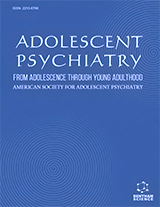Abstract
Varicella Zoster Virus (VZV) causes a highly contagious infection, chicken pox and has the capacity to cause latent persistent infection of the dorsal root ganglia. The latent virus can reemerge inducing painful blistering of the skin called herpes zoster or shingles. Worldwide varicella immunization with an attenuated OKA/Merck VZV considerably reduced the incidence of the disease but did not prevent latency. Introduction of a second dose of the vaccine and the vaccine for people over 50, Zostavax, consisting of a much larger dose of the same vaccine virus, reduced the incidence of chicken pox but did not prevent latency and reemergence of the virus as herpes zoster. This review provides an overview of the structure of the virus, mechanism of infection and known evasion mechanisms that VZV uses to establish latency and persistence.
Keywords: Varicella-Zoster, VZV, Herpesviridae, Aplhaherpesviridae, Chicken pox, dorsal root ganglia, cranial root ganglia, Varicella vaccine, Viral vaccine, Varivax, Zostavax, Vaccination, Virus disease, Herpesvirus 3, Herpes zoster, HSV, Shingles, Immunogenicity






















